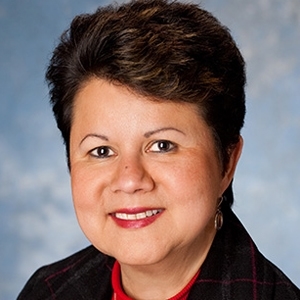And the Winner Is...Controversy

This article was updated on July 12, 2018.
At the recent Academy Awards, comedian Chris Rock lit up the stage with a 10-minute monologue about the lack of diversity among nominees for Hollywood's most prestigious recognition, the Oscars. He was specifically referencing there were no African-Americans nominated. He neglected to mention that there were no Latinos, Asians or Native Americans nominated either. As an interesting backdrop, 94 percent of the Academy voters are white.
Setting aside the sometimes questionable humor used to make his point, Chris Rock's bold actions ignited a necessary and important conversation about why in Hollywood, academia, the corporate world and even in sports, we seem to lack diversity "at the top of the house". In a perfect world, we would see proportional representation of demographics across the spectrum. For example, according to the U.S. Census Bureau, African-Americans make up 13 percent of the U.S. population, Latinos (17 percent), Asians (6 percent) — so you would expect similar representation in Academy Award winners, C-level executives and presidents of Colleges/Universities.
According to Management Leadership for Tomorrow, a nonprofit corporate diversity consulting firm, African-Americans make up less than 3 percent of senior management positions and Hispanics about 1 percent. In comparison, African-Americans and Hispanics make up about 15 percent of all college graduates and 8 percent of the graduates from the Top 25 business schools. According to the American Council on Education, African-Americans make up 6 percent of university presidents and Hispanics make up 4 percent, certainly better than private industry but still under-represented relative to their population.
This is no doubt a complex topic. We'd like to think that leadership selections reflect the most qualified individual for the job.
Not always. Researchers from Georgetown, Emory and Iowa State Universities tracked the careers of more than 1,200 coaches in the NFL from 1985-2012 and found that white coaches were more than twice as likely to be promoted to coordinator than their black counterparts, regardless of their performance, position level, years of experience or coaching background. In other words, the difference in variability could not be explained by any of the variables that could rationally account for the gap. In the case of the NFL, they concluded that "unconscious bias" was the only explanation.
That's why I'm such a fan of The Voice — the judges vote purely on the quality of the vocals, not what the singers look like.
Now let's bring this back to the workplace. The dearth of women and minorities on corporate boards and in the C-suite is well documented. Despite years of enterprise-wide diversity programs and committed CEOs, women and minorities remain under-represented at the highest levels in most organizations.
Is "unconscious bias" the reason, and if so, what can we do about it? Unconscious bias is a tendency we are unaware of that happens "automatically," typically triggered by the brain making quick judgments about people and situations influenced by our background, cultural environment and experiences. It shapes how we think, how we behave and how we make decisions.
So if we are predisposed to think and act a certain way, is it possible to retrain the brain to react differently? I believe it is. At least in the workplace, here are some actions we can all take to prevent unconscious bias from impacting our talent decisions:
Know your biases. Think about how you grew up, what was your family situation? Who were your role models? When you think of someone successful, what image comes to mind? Did you play competitive sports in school? What makes you uncomfortable? Your answer to these questions will shape your views on people and talent. Are you evaluating candidates or promoting team members based on objective criteria, or on personality traits you share? Are you applying the same standards and criteria to everyone equally? If you're curious to know your biases, take the Implicit Association Test, the results may surprise you.
Pay attention to your environment. What's the current make-up of your team? Is your physical workplace gender-neutral and accessible to those with disabilities? Do you use words or phrases that favor certain types of people or unintentionally exclude others? Who gets the high profile assignments? Are you silent or do you laugh when someone makes "off-color" jokes? Pay attention, because candidates and colleagues do. Being aware of subtle and unintentional behaviors is critical to creating an inclusive environment and avoiding unconscious bias.
Avoid making snap decisions. It's natural to be swayed by "first impressions", but first impressions can breed unconscious bias. Look beyond the surface. Cultural differences can sometimes eliminate otherwise highly qualified candidates. For example, speaking up and having a point of view is considered a desirable leadership characteristic in Western culture, but not so in certain Asian cultures. Take the time to consider all the factors, evaluate your process for decision making and seek diverse points of view for input to "interrupt" unconscious bias.
Define job requirements clearly. Before interviewing candidates for a role, identify the specific qualifications and necessary skills to perform the job effectively. For example, a position might require a 4-year college degree with strategic planning, consulting experience and strong collaboration skills. Separate the "nice to haves" from the "must haves". In some cases, the "nice to haves" (e.g. an Ivy League college degree or experience from a top 5 consulting firm) may overshadow important criteria like collaboration skills and can exclude many individuals who would otherwise have what it takes to perform well.
Leverage diverse interview panels. In some organizations, names are redacted from resumes when building candidate slates to ensure hiring managers are evaluating candidates purely on qualifications. Be intentional about having diverse backgrounds evaluating talent selections. Not only will you have a richer, more robust evaluation process – you will also increase the likelihood that more qualified diverse candidates get selected.
Bottom line, the best talent can come from anywhere — so by definition, it's diverse. No one "demographic" has got the market cornered. If we want to have the best talent represented across all levels, we have to interrupt our natural tendencies by becoming aware of our own biases and taking steps to be more deliberate in our decision-making process.



